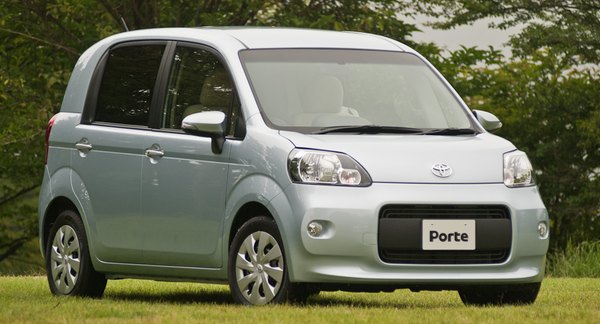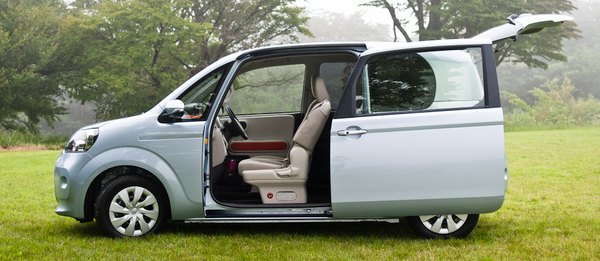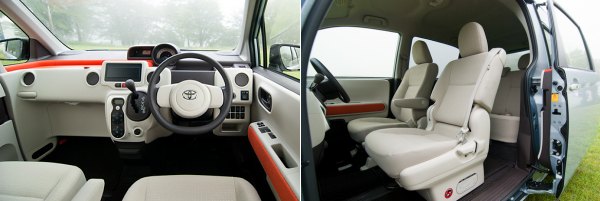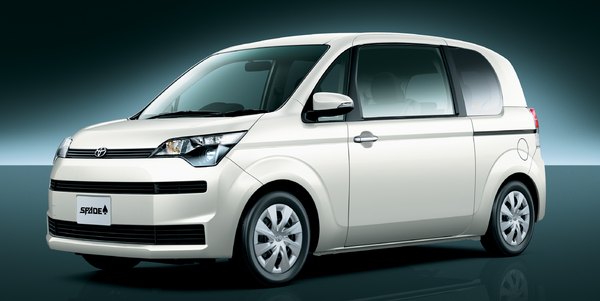|
|
|
Published
on 16
Jan 2015
|
All rights reserved.
|
|

|
Revisiting my old
review of the first generation Porte written 8.5 years ago, I am amazed
that most of the descriptions are still applicable to the new car. It
is still a very tall hatchback featuring a sliding door on the pavement
side and 2 conventionally hinged doors on the other side. It still
borders between a B-segment hatchback and compact MPV. Its exterior
dimensions are virtually unchanged at 4 meters long, 1.7 meter wide,
1.7 meter tall and rides on exactly the same 2600 mm wheelbase. Time
seems standstill when it comes to styling, or build quality, or engines
and performance. Maybe the “Lost Decade” of Japan is not finished yet.
In fact, the only news about the new Porte is the addition of a sister
car, Spade. It’s the same car except different styling and interior
trim. Toyota expected sales to be evenly distributed between the two,
though the Spade turned out to be more popular. Anyway, the twins are
still considered to be a disappointment, as they never met the (already
conservative) sales target of 96,000 units a year. In 2013, i.e. the
first full year of their sales, just over 80,000 units were sold. They
dropped to 65,400 units last year thus the road ahead could only get
worse. For a car whose sales bounded in the domestic market, it is
unlikely to be profitable.

|
So what’s the attraction of the single sliding door? Well, as every MPV
owner can tell, it is easier to get in and out at tight parking space.
For parents having small children, sliding door is also safer and more
convenient, especially when this one is powered and remote controlled.
It would have been even better to have twin-sliding doors, but Toyota
considered one on the pavement side is more cost effective. As in the
first generation Porte, the front passenger seat is mounted on rails.
It slides and flips forward to ease access to the rear seats. Thanks to
the lack of transmission tunnel, the driver may also get in and out
from the sliding door.
The car’s extraordinary tallness is said to allow children to stand in
the cabin or store very tall luggage like a small tree, both are
pointless to me. It doesn’t help handling and fuel consumption. Since
the roof is so tall, the car allows high-mounted seats yet affords
enormous headroom. The seats have unusually thick cushions thus are
comfortable, but they are not as flexible as a true MPV should. The
60/40-split rear bench does not slide. It folds but not flat. Its
cushions may flip up to store luggage on the cabin floor. Toyota said
you can place a bicycle there, but that has to be a small one, not a
mountain bike. After all, this is a parents' car rather than a
multi-activity vehicle.

|
The interior design looks funky at first. A closer look will find the
whole dashboard is made of toy-grade hard plastics. Perhaps it
deliberately appears to be a Toy Kingdom to please children and their
mothers. Every detail seems incompatible with the sense of conventional
drivers. For example, at the place you normally expect for an
instrument pod it is an empty space for you to put your purse and
wallet. Moreover, there offers a pair of clips for you to put your
family photo, so you can see your beloved ones all the way driving.
This cabin also offers countless of small cubbies, shopping bag hooks,
cup holders, bottle cubbies, tissue box holders and even an umbrella
bin at the C-post. It is not a car cabin but a living room.
There is little to talk about its driving dynamics, because this is an
area its designers put at the lowest priorty. The Porte is not too
heavy, but its 2 engines – 95 hp 1.3 DVVT-i and 109 hp 1.5 VVT-i – are
not particularly gusty. Considering its lack of driver appeal, the
smaller motor is a smarter buy, because it is sweeter revving and more
refined. CVT isn’t the choice for keen drivers, but it matches the
character of the car well. Anyway, you don’t have other choices. The
second generation car has its body roll reduced in cornering, but it is
still not happy to be hustled. Compared with K-cars like Honda N-Box,
the Toyota does offer superior ride refinement and better sound
deadening. It costs significantly more, too.

|
|
Verdict:   |
|
|
|
|
|
|
|
|
|
|
Porte
1.3
|
2012
|
| Front-engined,
FWD |
| Steel monocoque |
| Mainly steel |
| 3995 / 1695 / 1690 mm |
| 2600 mm |
Inline-4
|
| 1329 cc |
DOHC 16 valves, DVVT
|
| - |
| - |
95 hp
|
89 lbft
|
CVT
|
F: strut
R: torsion-beam
|
-
|
| 165/70R14 |
1110 kg
|
-
|
-
|
-
|
|
Porte
1.5
|
2012
|
| Front-engined,
FWD |
| Steel monocoque |
| Mainly steel |
| 3995 / 1695 / 1690 mm |
| 2600 mm |
Inline-4
|
| 1496 cc |
DOHC 16 valves, VVT
|
| - |
| - |
109 hp
|
100 lbft
|
CVT
|
F: strut
R: torsion-beam
|
-
|
| 175/65R15 |
1150 kg
|
-
|
-
|
-
|
|
|
|
|
|
|
Performance
tested by: -
|
|
|
|
|
|
|
|
|
Copyright©
1997-2015
by Mark Wan @ AutoZine
|
|